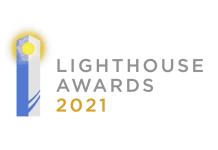
Check out how the Top 10 customer engagement trends for 2015 are shaping up in this series. If you missed #7 last week, you can read it here!
Or, I should say, “recognizing and rewarding” through experiences? I’d like to tackle both sides of customer experience—in fact, the balance of recognize/reward is at the heart of the brand’s authenticity.
But let’s back up to the basics. Customer experience, and in particularly opt-in programs and loyalty programs, are increasingly diversifying their “earn” and “burn” components to include additional engagement elements. The success of design and implementation has been mixed at best. On the “recognize” or “earn” side of the equation, capture continues to be a challenge. Social connectivity remains challenging both with respect to purpose, policy, and connection (but we’re finally seeing better seamless integrations showing the path forward, thanks to facilitating technologies like Gigya). Reviews remain a conundrum as providing an incentive for a review can distract from the desired unbiased nature of a social commentary. Content creation and content consumption are another way to recognize digital engagement—videos, articles, and voting each are finding their way into reward schemes (see great examples from P&G and Red Bull).
So while digital, experiential engagement chugs along, some of the most interesting examples are in the offline world. The North Face was among the very first to use their race, challenges, and film events as capture points for customer experiences—allowing loyalty members to earn VIPeaks Points for truly engaging in the activities that most closely align to their outdoor-focused brand. Red Bull (still in limited pilot) increasingly is combining their incredible music and sports events with their customer engagement efforts.
Generally speaking, loyalty programs that have added experiential earn to their schemes are not allowing these actions to break the economics of their programs. Experiential earn is naturally limited by a relatively small number of people who are socially active contributors, the relatively few number of events, and in some cases some business rules that prevent overly motivated members from abusing the generosity of the programs.
The real fun and creativity is on the reward side. While monetary rewards remain popular among program participants, there is a mutual frustration between brands that want to use their programs to promote their uniqueness and consumers who are not motivated by $5-10. According to the 2014 Colloquy study, “54% of U.S. consumers said they are dissatisfied with their loyalty programs based on reward offerings” and “93% rate the types of rewards offered as either ‘very important’ or ‘somewhat important’ when deciding to engage in a program.” The authors note that experiential rewards support individual aspirations and appeal on the emotional level.
When designing their loyalty program, The North Face wanted to create a rewards program unlike any other in retail. The basic premise was to recognize customer loyalty with experiences that fully aligned to the satisfaction that they get when they’re using their purchases. This allowed The North Face to significantly boost the perceived value of a reward while better managing the cost. In delivering rewards such as ski lift tickets, climbing expeditions, race entries, film series, and opportunities to interact with The North Face’s sponsored athletes, the company leverages their other marketing investments and only adds small marginal cost to deliver lifetime experiences. And while there is a risk of taking a reward certificate out of the hands of loyal customers (the frequency rational for rewards), the overall satisfaction of the program has more than covered the impact.
Starwood is another brand that uses amazing experience both as a reward (e.g. bid your points on these experiences), but also as a surprise and delight. Platinum Ambassador members are often invited to local events (e.g. Cubs games, concerts) as a way to thank their most loyal and profitable guests.
The secret is of course balance—balance of earn and burn, balance of experience and monetary recognition and reward. But increasingly, sophisticated brands are looking to experiences as their principle go-to-market differentiation and are having great success in the process.





